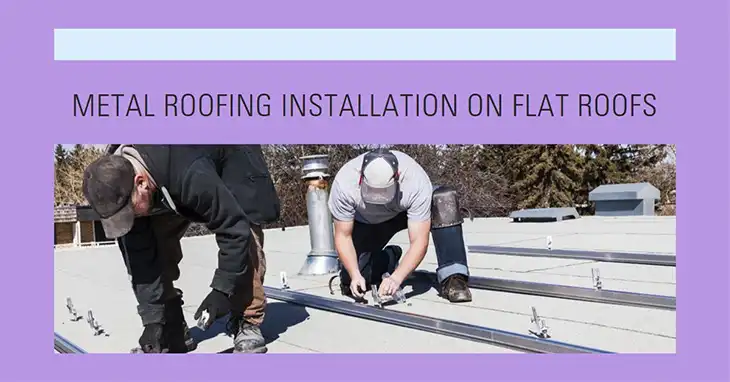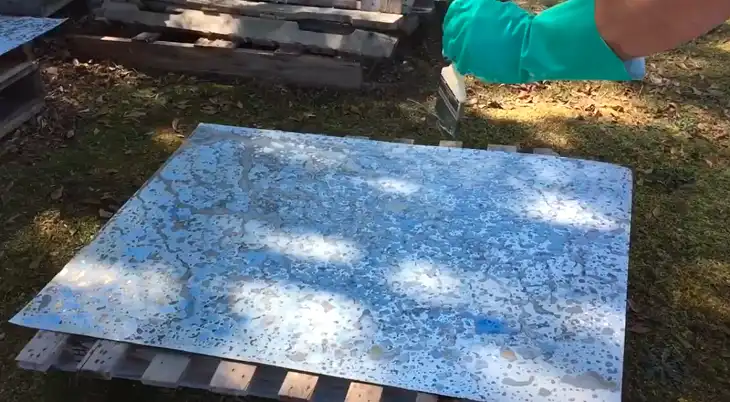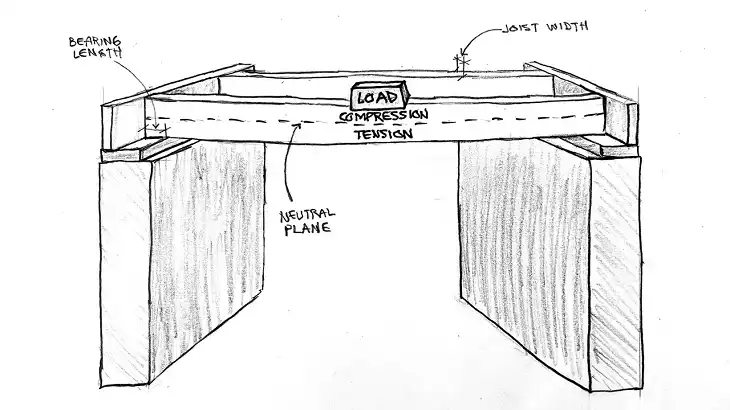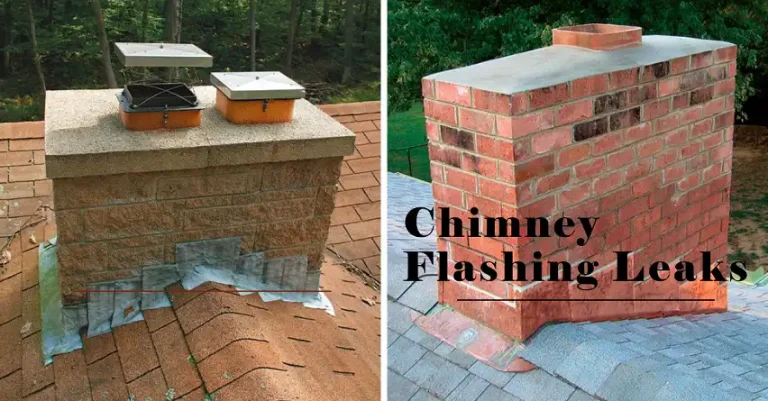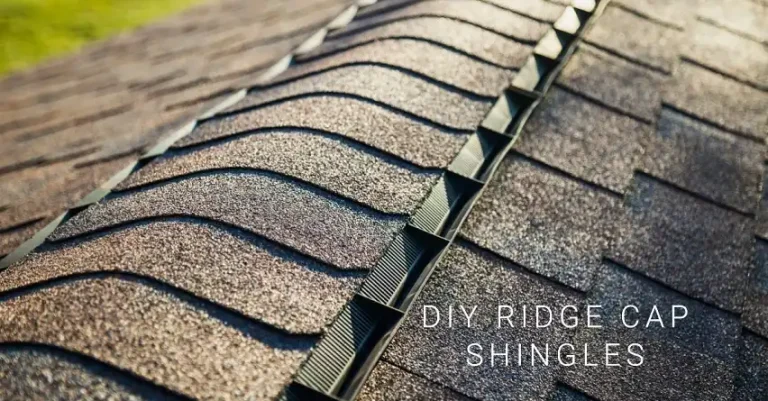K-Style Gutters vs Half-Round Gutters: Which One’s The Better Option
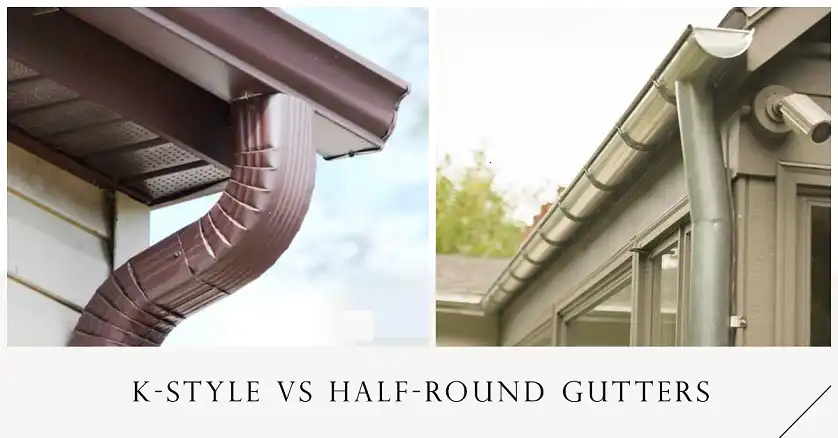
When choosing the right gutter style for your home, it’s essential to consider not just aesthetics but also functionality, cost, and maintenance requirements. This guide will comprehensively compare K-Style gutters and Half-Round gutters, two popular choices in residential construction, to help you make an informed decision.
What Are K-Style Gutters?

K-Style gutters are known for their modern, angular appearance, resembling the shape of the letter “K” from the side. They dominate the U.S. residential market, accounting for nearly 80% of installations due to their superior water management and ease of installation. Their rectangular back and flat bottom allow them to be nailed directly onto fascia boards, making them more stable and less prone to sagging.
- Ideal for: Contemporary and modern homes.
- Standard Sizes Available: 5-inch and 6-inch.
- Capacity: K-Style gutters can hold more water than other types, handling approximately 1.5 times the volume of Half-Round gutters of the same size. This makes them ideal for areas with heavy rainfall.
What Are Half-Round Gutters?

Half-Round gutters are U-shaped and feature a symmetrical, curved design that gives a timeless, classic appearance. They were standard in homes built before the 1950s and are commonly used in restoration projects. However, they are less efficient at handling large volumes of water, which makes them better suited for regions with moderate rainfall.
- Ideal for: Historic homes, bungalows, and European-style properties.
- Standard Sizes Available: 5-inch and 6-inch.
- Capacity: Due to their rounded shape, Half-Round gutters have a slower water flow, making them prone to overflow in heavy rains. However, their smooth interior allows debris to pass through more easily, reducing clogs.
Key Differences: K-Style vs. Half-Round
The table below outlines the critical differences between K-Style and Half-Round gutters:
| Feature | K-Style Gutters | Half-Round Gutters |
| Appearance | Modern, angular profile | Traditional, rounded shape |
| Water Capacity | Holds 1.5x more water | Slower flow, less capacity |
| Installation | Easier to install, attaches directly to fascia | Complex installation, needs brackets |
| Cost | Lower cost due to easier manufacturing | 20-30% more expensive |
| Maintenance | Prone to debris buildup in corners | Easier to clean due to smooth interior |
| Ideal Home Styles | Colonial, Ranch, Modern | Historic, European, Craftsman |
| Durability | Less prone to denting, sturdier | More prone to denting |
| Material Availability | Wide variety (aluminum, vinyl, steel, copper) | Mostly high-end materials (copper, steel) |
Aesthetic Considerations
One of the most prominent distinctions between these two gutter styles is their visual appeal. K-Style gutters have a sharp, decorative finish resembling crown molding, making them blend seamlessly with contemporary home designs. They are also available in multiple colors and finishes, offering excellent customization options.
In contrast, Half-Round gutters are often chosen for their ability to accentuate the historic or high-end look of a property. Typically, they are found in premium materials like copper or galvanized steel, which develop a patina over time, adding to their charm.
Cost Analysis: K-Style vs. Half-Round
The cost difference between K-Style and Half-Round gutters can significantly impact your decision. Below is a breakdown of average prices:
| Gutter Style | Material Cost (per linear foot) | Installation Cost (per linear foot) | Total Cost (per 200 ft) |
| K-Style | $4 – $8 | $3 – $5 | $1,400 – $2,600 |
| Half-Round | $7 – $12 | $5 – $8 | $2,400 – $4,000 |
K-Style gutters are generally 20-30% less expensive overall, both in material and installation costs. Their straightforward design requires fewer specialized tools and skills, reducing labor expenses.
Performance and Maintenance
K-Style gutters have a higher capacity, making them ideal for regions prone to heavy rain. However, their internal corners can trap leaves and debris, making them more likely to clog. To counter this, homeowners often need to invest in gutter guards or perform regular maintenance.
On the other hand, Half-Round gutters offer easier maintenance due to their smooth interior, which allows water and debris to flow through more naturally. While they have a lower capacity, they are less likely to accumulate clogs, making them a good choice for properties surrounded by trees.
Durability Considerations
Durability largely depends on the material chosen. Aluminum K-Style gutters are lightweight yet durable, while vinyl options can become brittle in extreme temperatures. Conversely, Half-Round gutters made of copper or galvanized steel are highly durable but may dent more easily due to their curved shape.
When to Choose Each Gutter Style
- Choose K-Style if:
- You have a modern or contemporary home.
- Your area experiences heavy rainfall.
- You want to minimize upfront costs.
- Ease of installation and maintenance is a priority.
- Choose Half-Round if:
- You are restoring a historic property.
- Your home has a traditional or European aesthetic.
- You prioritize ease of maintenance over water capacity.
- You want a high-end, timeless look.
Final Words
Choosing between K-Style and Half-Round gutters ultimately depends on your home’s architecture, climate, and budget. K-Style is the go-to choice for those seeking high water capacity and affordability, while Half-Round is perfect for homeowners looking for a traditional, upscale appearance.
For most standard homes, K-Style gutters offer better value and functionality. However, for high-end properties or historic restorations, the elegance and charm of Half-Round gutters can elevate the overall aesthetic, making the additional investment worthwhile.
FAQs
Are Half-Round Gutters More Expensive?
Yes, Half-Round gutters typically cost 20-30% more due to specialized materials and installation complexity.
Which Gutter Style is Easier to Maintain?
Half-Round gutters are easier to clean due to their smooth, rounded interior, which minimizes debris buildup.
Can I Install K-Style Gutters Myself?
Yes, K-Style gutters are more DIY-friendly because they attach directly to the fascia with fewer specialized components.
What are the disadvantages of half-round gutters?
Half-round gutters can hold less water than their K-style counterparts. Also, they are a bit more complex to install.

